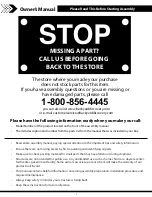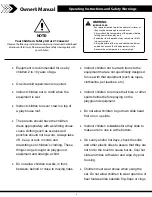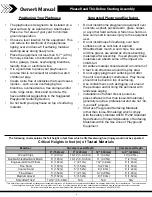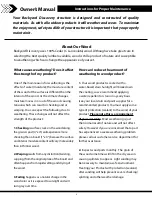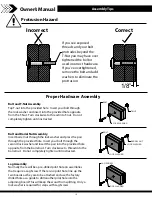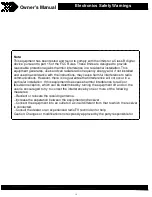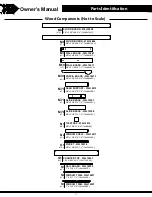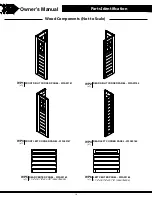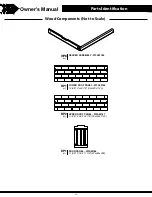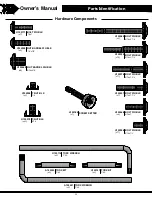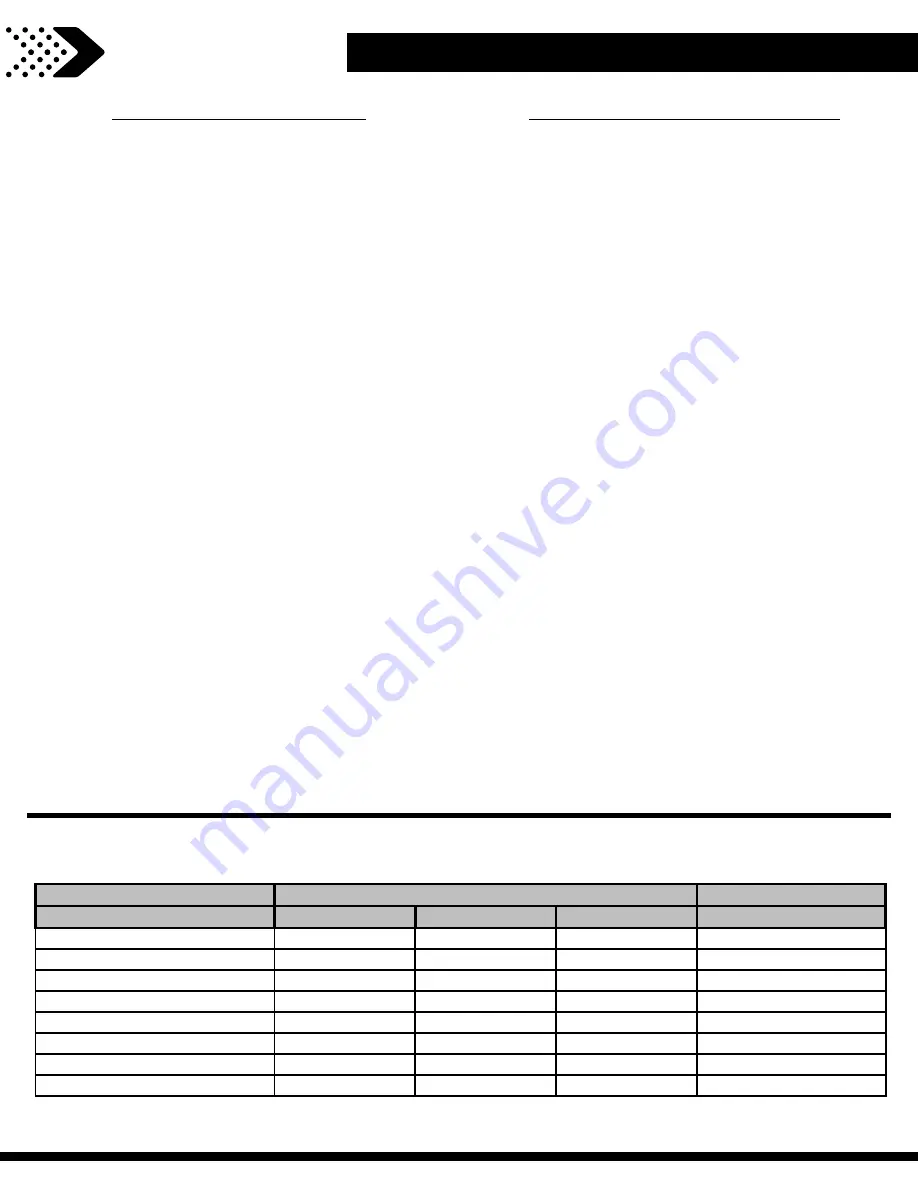
Positioning Your Playhouse
•
The playhouse is designed to be installed on a
level surface by an Adult with an Adult helper.
Place in a fl at area of your yard to minimize
ground preparation.
•
Choose a level location for the equipment.
This
can reduce the likelihood of the playhouse
tipping over and loose-fi ll surfacing material
washing away during heavy rains.
•
Place the equipment not less than 6
'-7"
(
2.0
m)
from any structure or obstruction such as a
fence, garage, house, overhanging branches,
laundry lines, or electrical wires.
•
It is a good idea to place your playhouse in
an area that is convenient for adults to watch
children at play.
•
Create a site free of obstacles that could
cause
injuries – such as low overhanging tree
branches, overhead wires, tree stumps and/or
roots, large rocks, bricks and concrete. We
have additional suggestions in the Suggested
Playground Surfacing Section.
•
Do not build your playhouse on top of surfacing
material.
Suggested Playground Surfacing
•
Do not install home playground equipment over
concrete, asphalt, packed earth, grass, carpet,
or any other hard surface. A fall onto a hard sur-
face can result in serious injury to the equipment
user.
•
Do not install loose fi ll surfacing over hard
surfaces such as concrete or asphalt.
•
Shredded bark mulch, wood chips, fi ne sand
and fi ne gravel, are added as shock absorbing
materials after assembly. If used properly these
materials can absorb some of the impact of a
child’s fall.
•
All surface material should extend a minimum of
6 feet in all directions around the play area.
•
Do not apply playground surfacing until after
the unit is completely constructed. Play house
should not be built on top of surfacing.
•
Use containment, such as digging out around
the perimeter and/or lining the perimeter with
landscape edging.
•
Installations of rubber tiles or poured-in-
place surfaces (other than loose-fi ll materials)
generally require a professional and are not “do-
it-yourself” projects.
•
Shall use Playground Surfacing Materials
(other than loose-fi ll material) which comply
with the safety standard ASTM F1292 Standard
Specifi cation of Impact Attenuation of Surfacing
Materials within the Use Zone of Playground
Equipment.
The following chart explains the fall height in feet from which a life threatening head injury would not be expected
Critical Heights in feet (m) of Tested Materials
Material
Compressed Depth
6" (152mm)
9" (228mm)
12" (304mm)
to 9" (228mm)
Wood Chips
7' (2.13m)
10-12' (3.0-3.6m)
11' (3.35m)
10' (3.05m)
Double-Shredded Bark Mulch
6' (1.83m)
10-12' (3.0-3.6m)
11' (3.35m)
7' (2.13m)
Engineered Wood Fibers
6' (1.83m)
7' (2.13m)
>12' (3.66m)
6' (1.83m)
Fine Sand
5' (1.52m)
5' (1.52m)
9' (2.74m)
5' (1.52m)
Coarse Sand
5' (1.52m)
5' (1.52m)
6' (1.83m)
4' (1.22m)
Fine Gravel
5' (1.52m)
7' (2.13m)
10' (3.05m)
6' (1.83m)
Medium Gravel
5' (1.52m)
5' (1.52m)
6' (1.83m)
5' (1.52m)
Shredded Tires*
10-12' (3.0-3.6m)
N/A
N/A
N/A
Uncompressed Depth
*This data is from tests conducted by independent testing laboratories on a 6-inch depth of uncompressed shredded tire samples produced by four manufacturers. The tests reported
critical heights, which varied from 10 feet to greater than 12 feet. It is recommended that persons seeking to install shredded tires as a protective surface request test
data from the supplier showing the critical height of the material when it was tested in accordance with ASTM F1292.
Please Read This Before Starting Assembly
Owner’s Manual
6



